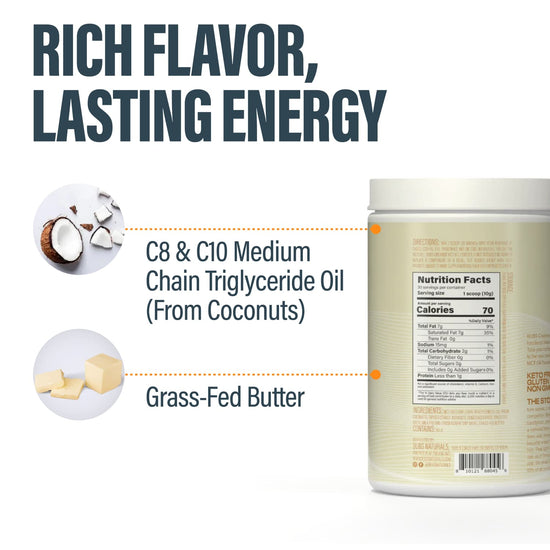Table of Contents
- Introduction
- Understanding Coffee Creamers
- How Long Can Coffee Creamer Sit Out?
- Signs Your Creamer Has Gone Bad
- Health Implications of Consuming Spoiled Creamers
- Conclusion
- FAQ
Have you ever poured yourself a cup of coffee, only to realize that you left the creamer out overnight? It's a moment of panic that many coffee lovers have faced. The question that lingers is: can you drink coffee creamer left out overnight? Understanding the safety and implications of consuming creamer left at room temperature is essential for anyone who enjoys their morning brew. In this post, we will explore the different types of creamers, their storage requirements, and what to look out for when determining if your creamer is still good to use.
Introduction
Picture this: it's a chilly morning, and you’re savoring the aroma of freshly brewed coffee. You reach for your trusty coffee creamer, only to discover it's been left out overnight. Do you toss it out and rush to the store for a new bottle, or can you safely use it? This scenario is relatable for many, and if you've ever found yourself in this predicament, you're not alone!
Coffee creamers come in various forms, from dairy-based to non-dairy, and each type has its own guidelines regarding storage and shelf life. Knowing these details can save you from unnecessary waste and potential foodborne illnesses. In this blog post, we will dive deep into the world of coffee creamers, focusing on their types, how long they can sit out, and the signs of spoilage. By the end of this article, you’ll feel confident in your ability to make safe choices regarding your coffee creamer, whether it's a quick morning fix or an afternoon treat.
Our exploration will cover:
- The different types of coffee creamers and their respective storage requirements.
- The science behind why certain creamers spoil faster than others.
- Practical tips for determining if your creamer is still safe to consume.
- Health implications of consuming spoiled creamers.
Let’s embark on this creamy journey together and discover everything there is to know about coffee creamers!
Understanding Coffee Creamers
Types of Coffee Creamers
Before we delve into storage and spoilage, it’s essential to understand the various types of coffee creamers available:
-
Liquid Dairy Creamers: These are traditional creamers made from milk or cream. They include half-and-half, heavy cream, and flavored varieties. These creamers are typically found in the refrigerated section of your grocery store and should be kept cold to prevent spoilage.
-
Liquid Non-Dairy Creamers: Made from plant-based sources like soy, almond, or coconut milk, these creamers offer a dairy-free alternative. While many non-dairy creamers are shelf-stable until opened, they still require refrigeration after opening.
-
Powdered Creamers: These creamers have a long shelf life and can be stored at room temperature for extended periods. They are convenient for those who may not use creamers regularly or for occasions with guests.
-
Flavored Creamers: These can be either dairy or non-dairy and often contain added sugars, flavors, and preservatives. Like other liquid creamers, once opened, they should be refrigerated and consumed within a week or two.
The Science of Spoilage
Understanding why creamers spoil is crucial in answering our main question. The primary concern with leaving creamers out is the growth of harmful bacteria. The USDA defines the “danger zone” for food safety as temperatures between 40°F and 140°F. In this range, bacteria can multiply rapidly, increasing the risk of foodborne illnesses.
-
Dairy Creamers: These should never be left out for more than two hours. Once opened, they can last about 7-10 days in the fridge but will spoil quickly if left at room temperature.
-
Non-Dairy Creamers: They may last longer than dairy creamers, but once opened, they should still adhere to the two-hour rule.
-
Powdered Creamers: These are much more forgiving. They can typically stay out for months when stored properly, thanks to their low moisture content.
How Long Can Coffee Creamer Sit Out?
General Guidelines
-
Dairy Creamers: As a general rule, liquid dairy creamers should not be left out for more than two hours. If they sit out at room temperature for longer than this, they enter the danger zone.
-
Non-Dairy Creamers: These can also follow the two-hour guideline once opened. Unopened, they can last until the expiration date on the packaging.
-
Powdered Creamers: These are an exception to most rules. They can stay out for months without spoiling, making them a great option for occasional use.
Specific Scenarios
-
Coffee with Creamer: If you’ve added liquid creamers to your coffee, they should also be consumed within two hours. The same bacteria growth concerns apply.
-
Leftover Creamer: If you’re unsure how long your creamer has been out, it’s best to err on the side of caution and discard it.
Signs Your Creamer Has Gone Bad
When in doubt, there are several indicators to help you determine if your coffee creamer is still safe to use:
-
Smell: A sour or off smell is often the first sign that a creamer has spoiled. Trust your nose!
-
Texture: If the creamer appears curdled or chunky when poured, it’s best to discard it. Fresh creamers should have a smooth consistency.
-
Taste: If it tastes sour or has an unusual flavor, don’t consume it.
-
Color: Any significant change in color, especially if it appears darker than usual, can indicate spoilage.
Practical Tips for Storing Creamers
- Always return liquid creamers to the refrigerator immediately after use.
- Keep powdered creamers in a cool, dry place, tightly sealed to avoid moisture.
- Avoid pouring unused liquid cream back into the original container to prevent contamination.
Health Implications of Consuming Spoiled Creamers
Consuming coffee creamers that have been left out or that have spoiled can lead to a range of health issues. The most common symptoms of foodborne illnesses include:
- Stomach cramps
- Nausea
- Vomiting
- Diarrhea
- Low-grade fever
If you experience any of these symptoms after consuming potentially spoiled creamer, it’s essential to stay hydrated and consult with a healthcare professional if symptoms persist.
Conclusion
Navigating the world of coffee creamers can be complex, especially when it comes to understanding their shelf life and safety. The key takeaways are simple: always be mindful of how long your creamers sit out, recognize the signs of spoilage, and adhere to safe storage practices.
Whether you prefer dairy, non-dairy, or powdered creamers, we’ve got the perfect options for your coffee needs. At BUBS Naturals, we believe in supporting your wellness journey with clean, effective products. If you're looking for an energy boost, check out our MCT Oil Powder or explore our Creamers Collection to elevate your coffee experience.
FAQ
1. Can I drink coffee creamer that has been left out overnight?
No, it is not safe to consume coffee creamers left out overnight, especially if they are dairy-based.
2. How long can liquid creamers stay out?
Liquid creamers should not be left out for more than two hours to avoid spoilage.
3. Are powdered creamers safe to leave out?
Yes, powdered creamers can be stored at room temperature for long periods, as long as they are kept dry and sealed.
4. How can I tell if my creamer is spoiled?
Check for sour smells, curdled texture, off taste, or any significant change in color.
5. What should I do if I accidentally consume spoiled creamer?
If you experience symptoms of foodborne illness, stay hydrated and consult a healthcare professional if symptoms persist.
Written by:
Bubs Naturals

Butter MCT Oil Creamer
BUBS Butter MCT Oil Creamer (formerly Halo Creamer): Scientifically-Backed Brain and Body Fuel
BUBS Butter MCT Oil Creamer is your go-to for clean, fast-acting energy and focus, no crash included. It blends creamy grass-fed butter with fast-acting MCT oil powder (C8 and C10) to kickstart your day and keep you sharp. The MCTs go straight to work, giving your brain a quick boost while the grass-fed butter supports digestion and gut health.
Together, they help curb cravings, keep you feeling full longer, and support steady energy throughout the day—perfect for fueling your mornings or powering through the afternoon slump.
Starts at $36.00
Shop

